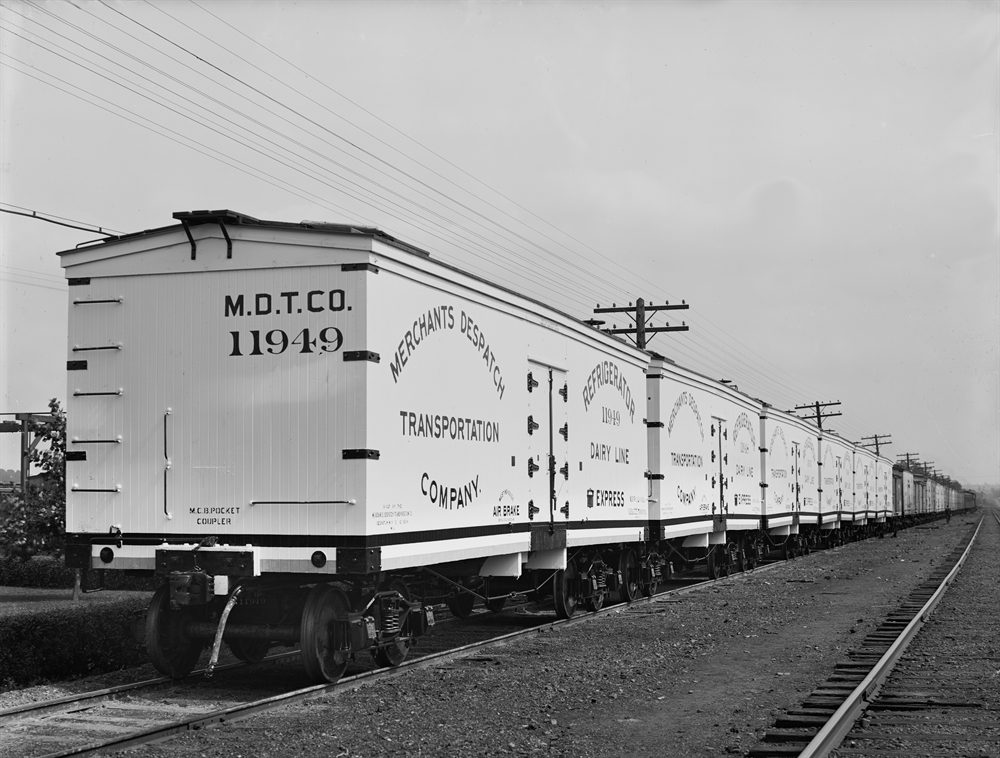Inducted 1999
Freight cars consist of boxcars, flatcars, gondolas, open and covered hoppers, refrigerator cars and tank cars. Each car is designed for a specific range of products. The top three rail-haul items are coal, ores and grain.
Boxcars carry a wide variety of commodities. Some were designed with a “cushioned” undercarriage and interior load-restraining devices to protect shipments that require extra care. Flatcars are equipped with tie-down devises and are used to haul truck trailers or containers. Gondolas are open cars that can carry almost anything that can be loaded by crane, magnet or spout. Hoppers are equipped with chutes at the bottom for easy unloading. Open-top hoppers carry products such as coal and ores while covered hoppers carry dry bulk goods that need protection: grain, flour, cement and fertilizer. Gravel, crushed stone, food, forest products and automobiles are also shipped across the country by rail.
In recent years, the average capacity of freight cars has increase from 62 tons to about 90 tons. The new covered hoppers used to move grain can hold about 100 tons and can be loaded in 12 minutes, taking 3 minutes to unload them. Other improvements include multi-level and enclosed cars for automobiles and house-size boxcars for auto parts and canned goods. Tank cars have been developed for transporting liquid goods, such as industrial chemicals and food products such as molasses, orange juice and milk.
Historically, freight cars are significant as the major means of heavy goods distribution across the continent. Their development allowed large quantities of raw materials and finished products to be moved economically across North America.


